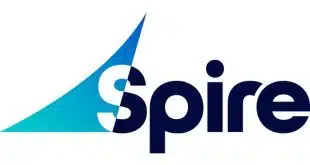Starting in March, checks sent to lockboxes and some point of sale transactions can be processed by merchants and billers through the automated clearing house system without offering consumers a chance to opt out under new rules set by NACHA, the ACH’s regulatory organization.
The new rules, which will be effective March 18 and will apply to NACHA’s accounts-receivable conversion (ARC) and back-office conversion (BOC) applications, reverse a longstanding policy that requires billers and merchants to let consumers choose not to have their checks converted to electronic debits. Merchants and billers will still have to give notice to customers that their checks will be converted.
Under another rule change, NACHA in September will start allowing businesses to get consumer authorization over the phone for recurring transactions through a transaction code called TEL.
The changes, part of a rules-simplification process NACHA has recently completed, are intended by the organization to make the ACH applications more appealing to businesses by streamlining transactions. NACHA sees this as particularly important as smaller merchants and billers look at adopting ACH payments as an alternative to remote deposit capture, a method that lets businesses create images of checks and process them electronically.
The opt-out requirement, in particular, has come to be seen as less important for businesses, given that opt-out rates have been marginal, typically running well under 1% of all consumers. With ARC, billers are able to convert paper checks they receive from consumers at designated lockboxes into electronic transactions. With BOC, merchants can batch consumer checks throughout the day and convert them later—typically, in a back office rather than at the point of sale–into electronic debits. A separate code, POP, applies to such conversions at the point of sale. POP transactions do not require an opt-out, since consumers can readily choose another payment method while dealing face-to-face with cashiers, NACHA says.
ARC transactions have been declining along with a general downward drift in check usage. They totaled 545 million transactions in the third quarter last year, down about 2% from the previous quarter and down more than 6% from 2009’s third quarter. The 4-year-old BOC application leveled off in the third quarter of 2010 at 44.2 million transactions, little changed from the second quarter and up 7% from the year-ago period. By contrast, the WEB application, which is used to process online bill payments and does not depend on checks, grew almost 3.5% from the second to the third quarter and 10% from the third quarter of 2009. Its third-quarter volume was 618.8 million transactions.
Still, while dropping the opt-out requirement may lower a barrier for some businesses, it likely won’t unleash a flood of new volume, says Nancy Atkinson, a senior analyst at Aite Group LLC, a Boston-based payments-research firm. “To the degree they’re simplifying the rules, it does increase adoption,” she says. “It’s not huge, but incremental.” Electronic-check applications like BOC and ARC, she says, can’t overcome the overall decline in check usage. “There’s nothing that’s going to drive huge adoption” in e-checks, she notes.
Under the change to the TEL rules, which goes into effect Sept. 16, a business may obtain an authorization from a consumer on the phone for recurring transactions, such as subscriptions or club memberships. The authorization must be recorded, and the business must send a copy of the authorization to the customer. Until this change, the TEL code could be used only for so-called single-entry transactions. Otherwise, the restrictions for recurring transactions are the same as for single transactions: Only consumer debits may be processed, and the code can be used only when an existing relationship has been established with the customer or when the customer makes the call.
In the third quarter, TEL transactions totaled 88.7 million, up 2.8% from the same quarter in 2009.





